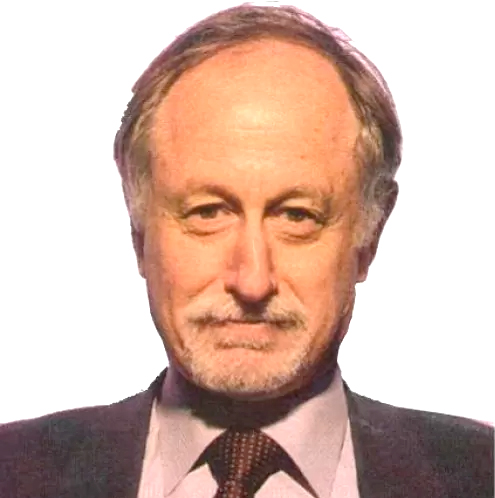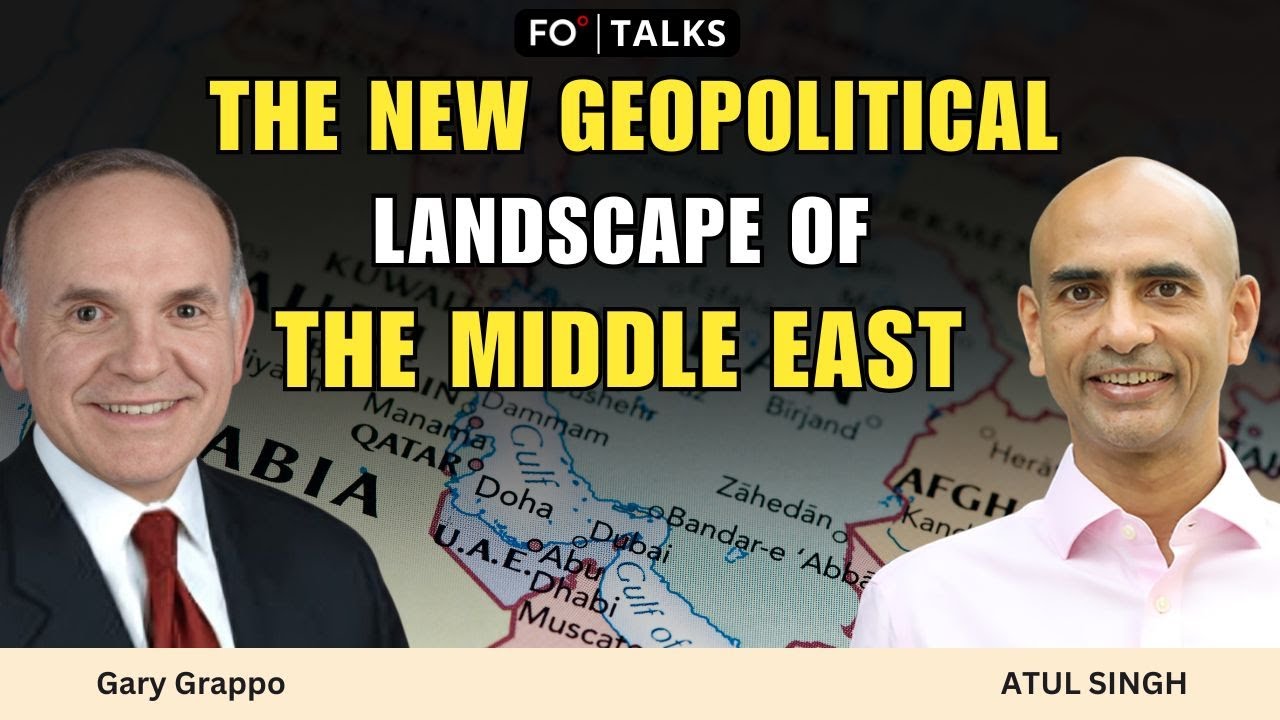Peter Isackson: Welcome to FO° Talks. I’m Peter Isackson, Fair Observer’s Chief Strategy Officer. It’s my immense pleasure to welcome back the talented opera and theater director Emily Hehl. This is our third edition of a series of conversations we’re calling The Culture of Culture. Our focus in the series has been on music, theater and storytelling. Today, we’re going to explore what some might consider to be a total paradox: the role of silence in music. So Emily, let me start with the paradox itself. People think of music as an activity focused on the production of organized, well-executed sound, which, in their minds, is the antithesis of the ambient silence we are surrounded by, or what at least we used to be surrounded by, until modernity imposed on us a background of sound effects. But to ask the question: Is it wrong to assume, as some people do, that music and silence are opposites? So is silence the negation of music, and music the negation of silence? I think you’re going to say no, but let’s hear you.
Emily Hehl: (Laughs) Otherwise, this conversation would be over quite soon, I think, indeed. No, I think they are the condition of each other. And I think the kind of thing you describe, which is our, I would say, Western perception that silence is the absence of something is very much inscribed in our whole culture. I mean, if we look at the Christian creation story: “In the beginning was the Word,” and the Word was the beginning of everything. Whereas if you, for example, look into Icelandic creation stories in the Edda — I’ll read a little thing at the beginning of the Edda:
“Erst was the age | when nothing was:
Nor sand nor sea, | nor chilling stream-waves;
Earth was not found, | nor Ether — Heaven —
A Yawning Gap, | but grass was none.”
So in other creation stories, the nothing was the actual beginning of everything. Or, if you look into, for example, Japanese culture, there is a word for the space between two things. If you have two objects, the word ma describes the space between things, whereas we would say here — or I would have said before — there’s nothing. There’s an actual word for the apparent nothingness. So I think to look at silence from this perspective is very, very interesting. And in both culture, literature, music, it opens an immense possibility of what silence, and therefore music, could be.
Peter Isackson: Yes, I mean, I suppose you can go into the technical side and say there isn’t a musical phrase that doesn’t use silence. For it to be a musical phrase, it means that there is silence after it and before it. And it’s a kind of frame which is active in itself. That’s one way of looking at it.
John Cage’s perspective on silence
Peter Isackson: But I’ll throw out another metaphysical question to try and reframe the way people make this radical distinction between music and silence: Would you agree — and I don’t necessarily agree with it, I’m just throwing it out there to see whether it makes any sense — could you say music is complex and silence is simple? Or would you want to say the opposite?
Emily Hehl: No, I think for me it’s actually music and sounds are almost the same in a certain way, because both require listening in order to be perceived. And I think the whole definition of silence itself is something that John Cage turned over completely. I mean, if we want to talk about music and silence, then John Cage is probably the first man to talk about, with his famous composition that probably most listeners know, 4′33″. But he didn’t only compose—
Peter Isackson: That means four minutes and 33 seconds.
Emily Hehl: Exactly, of apparent silence. But what you will hear is that there is nothing as acoustic silence. I think it’s important to talk about something like acoustic silence — the physical state of silence — and something we feel as silence, some kind of an inner silence. Because I think you can feel an inner silence in an acoustic, very loud city, like I’ve just been to Asia and Hong Kong and Korea, and I was shocked, because wherever you go, there is loud music on the streets. Every speaker has some kind of music. It was a real cultural shock for me, but it felt quite empty at the same time because there was, for me, no purpose for this music or this sound at that point. So that was a very lively example of inner and outer silence not being the same kind of path. And I think about this inner silence — so many people in cultural history have tried to express their feelings of this inner silence. And there is this term of how we need to “break the silence.” And so there’s all of these kinds of descriptions of silence which are completely independent of the, I would say, physical state of silence. And yeah, would you agree with that?
Peter Isackson: Oh yes, totally. But going back to your comment about Asia, about what you experienced in the streets of Hong Kong. I mean, that reminds me of my youth in California, where people had just discovered — I mean, we’re talking about the 1950s and 60s — people had discovered that it was easier to sell things if you had some uninteresting music, really, in the background that was just keeping their brains occupied or their senses occupied, in a way that they weren’t even aware of. We called that muzak, and apparently that’s a big thing in Asia.
Emily Hehl: I think so, too, yeah.
Peter Isackson: So that’s our commercial consumer society. And that makes me wonder about the John Cage piece, because obviously, that was a shocker when it happened. It was a performance that lasted four minutes and 33 seconds. And of course, physically, how did it work? There was a…
Emily Hehl: There was a pianist, and it was a few movements — I think three or four movements. And in between the movements, he would actually close and open the piano again. But then during the movement, he’s sitting there — or she — and waiting until the time is over to then start the next movement. And so there was no expected sound on the piano produced, but the actual sound the audience was confronted with was their own sounds. Like, if people cough in the audience, this was the performance. This is the piece that Cage wrote. It’s not the sound coming from the piano, but—
Peter Isackson: It’s not even the sound sources that are important. It’s the resonance and the echo of the random sounds.
Emily Hehl: Exactly, absolutely.
Peter Isackson: The ambience.
Emily Hehl: Yeah. And with this realization that there is nothing as acoustic silence, we would think, “Oh, if we shut up, there is silence.” But no, there’s always something if you give attention to it. And this piece did something to that. But it’s connected to a long research period of Cage, and he wrote a lot about this. He had an experience at Harvard University where he went into an anechoic chamber, which is meant to be the quietest place on Earth, basically. And he went in there, and even there, he heard two tones — a high note and a low note. And he was asking the guy in this chamber, like, “What is it? Why do I hear two notes when it’s meant to be this silent place on Earth?” And he said, “What you hear is your nervous system in operation and your blood circulation.” Whether this is true or not, I don’t know. I didn’t do any scientific research on it, but it’s an interesting perception to say, “You know what? Acoustic silence doesn’t even exist in that sense.”
Peter Isackson: That’s true. People who analyze the problem of tinnitus have — I’ve read things about it. I don’t have it. I’ve never suffered from tinnitus. My wife suffers from tinnitus, so that’s why I’m somewhat curious about it — but they say that it’s not reasonable to think that we should have silence. That, in fact, we don’t have silence because our bodily functions are actually producing something we don’t interpret as sound because it’s so permanent. And the way our brain functions with the ear is to be on the lookout for things that are happening outside. But things are happening inside, and that’s part of our system of processing sound.
Emily Hehl: Absolutely.
Peter Isackson: So to answer my own question, is music complex and silence simple? Silence is not simple.
Silence in opera and poetry
Peter Isackson: But I think you’ll agree that music is complex, because as a producer of opera — I mean, people who think about opera might say, “Well, this is very hypocritical of you to be talking about silence and music, because opera just inundates you and surrounds you with music that comes first of all from the orchestra, and then you’ve got the voices on top of it.” So tell me, is there an approach to understanding and integrating silence into an opera production?
Emily Hehl: For me, it is absolutely crucial. Because if you look closely in the scores — and therefore you really need the scores, you can’t listen to a recording, you need the score — composers often indicate when things should happen. And mostly the actual important actions happen in silences. Like, if you look at La bohème, for example, the moment where the candle goes out or the candle is being turned on, there is no music whatsoever. And I think this is very interesting that many, many composers in the history of opera put these crucial moments into silences because they don’t want to find music for it, or because they want to give the attention to the scene. And I personally think that the actual art or performance of music happens in between the notes and not in the notes. Like for me, it’s crucial — why does a piece of music even start? And what happens in between the music itself? It’s there, and it can be performed good, and even better, or moving, or whatever. But for me, the moments in between the notes is where performance and connection happens. So I try to really think from a standpoint of silence. In my studies, I was writing an opera together with an Irish composer based on silence. So we did an opera based on all these questions of silence. And we were diving also into a lot of poetry, because in poetry, silence is even more present, also in a visual sense. I think actually it’s quite interesting to look at silence in literature and music, because in literature, in between words, there’s basically nothing. So the only way to see the nothingness is the words. John Cage actually did a composition on that. It’s called “A Lecture on Nothing,” and it’s something that is written in a 4/4 kind of rhythm. And he spaces the words out, and therefore you see the silence in between, and you also hear it when you perform it. It’s a very interesting piece. “Lecture on Nothing” by John Cage.
Peter Isackson: I’ll look that up.
Emily Hehl: Yeah, it’s beautiful. But then in contrast, in music, you have an actual sign system for rests. So I think that’s the real opposite if you like literature or music, how these art forms deal with silence. In music, it’s considered a creative kind of state, whereas in at least Western literature, it’s more like the gap, the missing bit.
Peter Isackson: Well, you know, the final words of Hamlet as he’s dying on the stage is “silence.” It could be an example of interpreting musical notation, because the rest is silence, the rest of the notation.
Emily Hehl: Never thought about that, yeah.
Peter Isackson: But that brings us to — because you quoted that passage from the Edda — Shakespeare. One of my favorite Elizabethan poems was written by — I don’t know if you know Thomas Campion, who was a poet and a musician. He was a composer. He was one of those great Elizabethan composers — that was the era of William Byrd, Orlando Gibbons and Thomas Campion, who was also a poet. And I’ll read the poem to you, and I think you’ll appreciate it.
“Rose-cheeked Laura, come,
Sing thou smoothly with thy beauty,
Silent music, either other sweetly gracing.”
That is very Platonic. It develops, and it’s about beauty. But he sees the music as being silent and as being more expressive because it’s silent. But I’ll go further. Then he says:
“Lovely forms do flow
From consent, divinely framed.
Heaven is music, and thy beauty’s birth is heavenly.”
But then the next stanza is the one that I like the most:
“These dull notes we sing
Discords need for helps to grace them.
Only beauty purely loving knows no discord.”
The idea that — it tells me a lot about — I mean, it reminds me so much, as a part-time musician myself: “These dull notes we sing / Discords need for helps to grace them.” And when I studied music in high school, I studied harmony. And we were taught, in the background was the idea that discords are bad. You have to avoid them. And here is Thomas Campion, a fantastic musician — I think you’ll love it, you should listen to some of his pieces — telling us we need discords for helps to grace. So you construct harmony and the discords are what put something slightly out of joint, which makes you realize what you’re listening to and the value of what is harmonic. And I think it’s the same thing — that’s what you were saying about silence — is what makes the music become music.
Emily Hehl: Hmm. Yes, it’s a beautiful, beautiful experience. Thank you for that. And it reminds me also of — do you know George Oppen? Also a poet — American, British, I think — who also, in his poems, you can visually, actually see the silence. But there’s also all these unspoken things. I mean, if we then talk again about this inner silence, there are so many composers and poets who refer to that. I mean, even Wagner or Maeterlinck, Debussy, but then also more contemporary composers like, I don’t know, Eugène Ysaÿe, there is a whole list. The further we go in repertoire, the more important silence becomes. But already with Wagner, the roaring, the sounding silence was a very famous term for Wagner.
Peter Isackson: Oh, really? I wanted to ask about Wagner, because yeah, I’ve always had a problem with Wagner. Anyway, I’ve always taken seriously the remark sometimes attributed to Mark Twain, that goes, “I was told that Wagner’s music is better than it sounds,” which is a great remark. But what impresses me with Wagner — because I’ve had a love-hate, mostly hate, but some love for Wagner — is his ability to stretch things out and to avoid resolution. Because music is based on — I mean, the whole harmonic principle is creating things that are harmonic sequences and then resolving. And yeah, there are classic ways of resolving from the dominant to the tonic and so on. But Wagner really pushed it as far as you could go, as if he was holding off the silence as long as possible, but leading you to expect the silence.
Emily Hehl: Yes, very true. Yeah, he wrote about — like his term is das tönende Schweigen, which means that the silence is very much audible, actually. He used this term, I think, for Tristan. But yeah, I think just the concept of silence started long before John Cage in music. And I mean, of course, there are many composers who use silence as material for composition, as also poets use silence as material for their literal composition.
Cultural perception of silence
Emily Hehl: But I think if we talk about silence in music, there are so many other factors connected to it, because we’ve, in our first conversation, talked about the frames of perception of music. Like, our classical concert is based on silence. We talked about this back then, that there was this kind of reform revolution where — because in the past, people were just talking and chatting and eating and perceiving music at the same time — but there was a very strict moment in history where people said, “And now we listen to music in silence.” So I think silence in music is a lot more than just the composition, but the whole culture of perceiving and listening to music. Which is beautiful, because I think if you question where this inner silence is coming from, it’s usually a lack of resonance. Like the question, where do I need to say something in order for it to be heard, or in order for it to get a response? If we talk about breaking the silence, if there is some kind of a resonance, then you can eventually overcome this feeling of silence. And in order to create this, you need someone to listen, and therefore you again need silence. So I think silence can be something very, very important. I don’t want to do a bit of silence-bashing here. I’m a big fan of silence. But I think it’s not as simple as we think it is.
Peter Isackson: No, and I’ll give you another example. I was explaining this to a colleague — that I very much get unnerved, really, by the kinds of things I see now in the videos people produce on TikTok and the short videos where people explain things. The way they edit their films, they edit out all the silence. So you get to the end of a sentence, and the next sentence has already begun. And I say they’re cheating because silence is where we can digest. The little pause, even a tiny pause between two sentences, and the sense of rhythm that you get when you’re speaking — especially in a language like German or English or Italian — not so much in French. But that rhythm is what allows us to process things. And then the rhythm at the end of a sentence, as I was saying about musical phrases as well, is where you can digest what you’ve just received.
Emily Hehl: As we do at night, as well.
Peter Isackson: That moment is the most important moment. It makes me think as well about another aspect of music, which I actually worked on with some young Indians in India a couple of years ago, where we did some work for underprivileged Indians. And given the way they speak the Hindi language or any of the Indian languages and then use that system of musical structure when they’re speaking English, it makes it kind of difficult for English speakers to understand them. And one of the things I noticed is that the Indian — at least their perception of English, and I haven’t studied this in detail — they see the staccato aspect of English as being the thing to rely on. So what you get is a very staccato production of English, whereas English also, even though it is a stressed language, it’s legato. And that’s why in English, in contrast to the other European languages, the vowels are relaxed — which means that it’s very difficult to distinguish the vowels in English, which makes the consonants more important. So it is staccato, but the legato is what gives the legato moment between the accents — is where things are processed.
Emily Hehl: Yeah, I fully agree. And I think it’s very interesting to — yeah, when traveling or when being abroad — to look at how a certain culture deals with silence, because it is so, so very different. And also what you said, like these resting moments, it’s so crucial. But again, this is a way of looking at silence not as nothingness and the absence of something, but as something actually very, very valuable and necessary. And I think that’s something that in at least the German or Western culture that I’ve experienced, this idea of silence is not very present. People are regularly afraid of silence, and feel that it would be the lack of something. And I think in music, this is so substantially different, that we can learn a lot from silence and music.
Peter Isackson: So the message, I think, is that silence is getting bad press. And that’s a direction our culture has taken, which is highly regrettable.
Emily Hehl: Yeah. But also something I think that has been there from Christianity on. Like again, in the beginning was the Word. Like, that’s how the Western culture, also from a religious perspective, was designed, one could say. Like, the concept of silence in this Western kind of culture is just very, very different. I think not very healthy, necessarily.
Peter Isackson: There was something else you wanted, I think, to talk about: degenerate music? And I was wondering…
Emily Hehl: Oh right, I completely forgot about that. (Laughs)
Peter Isackson: I didn’t get the connection with silence.
Emily Hehl: I mean, if we again look at music as a broader thing than just one piece, then of course we can look at the performance aspect, as we just did a little bit, or the aspect of perceiving music, but then also at the aspect of repertoire, and what is being kept in repertoire and what isn’t. In our last conversation, we were talking about Auguste Allmé, who’s a basically forgotten composer. So like, this apparent silence of, for example, female composers or whatever. Or also pieces and works of music that were destroyed in the ‘30s in Germany and then are now slowly being rediscovered. I think that’s very important as well. If we look at the repertoire of music that we’re currently performing, to not assume that this is everything that has been there. Like, if we would look at things that are there as something that is just referring to what is not there, we would have a lot broader perspective on the world and on the musical repertoire. Because next to Mahler were many, many composers in his time that are not being performed anymore; maybe for reason, maybe not. I honestly forgot I mentioned it, but now that you say it, I think it’s a way of looking at repertoire and what do we play? What do we—
Degenerate music and the unspeakable
Peter Isackson: What is degenerate music? I mean, the Nazis had their idea…
Emily Hehl: Exactly. That’s what I was referring to. Because of course, me growing up in Germany, that’s the most discussed part of history. And this kind of silence that was created from such a big group of composers is astonishing, it is, yeah. So this responsibility also to either revive these pieces or to keep things alive that are currently in the danger of being made silent, I think, is another aspect of silence and music for sure.
Peter Isackson: What about the unspeakable? That’s another thing that we think about.
Emily Hehl: I think the unspeakable is a beautiful, romanticized word we’re using a lot, and that has been used a lot, especially in the 18th and 19th century, and that many composers of that time always refer to — also Wagner or Debussy. And I think it’s something we all know, which is that we feel things which we seem to not be able to express. And music, from time to time, succeeds in expressing these things — or at least gets us closer to expressing things or feeling things. But I think the unspeakable is one of the most mysterious moments of silence. Yeah.
Peter Isackson: So what do you mean by unspeakable? Because if we take it literally, it’s something you cannot speak. There must be a reason for not speaking it. So are we reflecting about the reason for not speaking it? What characterizes it as unspeakable?
Emily Hehl: I think that’s very individual. I’m not even referring to this as a personal experience. It’s just in the research of this opera I did a few years ago, we were doing a lot of research on silence in culture. And for example, people who experience things and they say they can’t speak about it because it’s too brutal. Or if you, for example, look at the poem, “Todesfuge,” a very, very famous poem that Paul Celan was writing after his experience in the concentration camps. And he published this poem, and he was accused of speaking about things no one should be able to talk about, and he was accused for talking about it. Because what happened back then in the ‘30s and ‘40s was something that was unspeakable — that no word could express the horror. And I think that’s something that is not only a description of this time, but about many, many things that happen to people — that they say no words can actually describe what it means, in a positive or in a negative sense.
Peter Isackson: Wasn’t it Adorno who said that—
Emily Hehl: Exactly, it was Adorno, yeah.
Peter Isackson: —That it was impossible to write poetry after the Holocaust?
Emily Hehl: Exactly, yes. And I don’t agree with that, because I think everything is worth being talked about. And I think we’re now even in a culture where we may be talking too much — where a bit more silence would be necessary. Which then again refers to the thing we said before, which is that you need silence in order to hear something. Like, of course, if there’s too much of this roaring silence, it’s a very oppressing feeling. But if everyone is talking at the same time, no one will hear what is actually happening. And the inner silence won’t be resolved, because there is no moment of resonance.
The act of listening
Emily Hehl: And I think that’s the whole thing about witnessing or experiencing some kind of liberation of this unspeakable or inner silence, whatever we want to call it; someone who listens to you is the most crucial thing. And therefore I think listening is as important as speaking. And therefore the silence is as crucial—
Peter Isackson: Which is the point Cage was making, right? And it occurs to me, in the case of 4′33″, that he may have been doing several things at the same time. He was making a comment about music itself — what it is and who we are as we listen to music. So it’s about the act of listening. I think he was probably making a point — and you’ll be able to say more about this than I — about composition. What this says about the notion of composition. For example, does a musician, a composer actually compose, or does the music compose itself? That’s another type of question. But where does musical inspiration come from? Does it come from the mind of the composer? Or does it come from some collective source? And I tend to believe that music always comes from a tradition and different traditions, and then it’s crystallized in some way by the composer. But it’s done because silence has also intervened. Otherwise it would be pure imitation.
Emily Hehl: Absolutely.
Peter Isackson: And then the third thing is, was Cage intending to make a comment about the consumer society? Will people pay for something that isn’t produced, organized and well-executed? Everything has a value in terms of what kind of effort went into it and what kind of marketing and branding we can do with it. So I expect — I don’t know whether Cage was a social critic or critic of the consumer society — but I expect that there’s that dimension to it as well.
Emily Hehl: I think so, absolutely. And two things I want to say about that the kind of thing you describe also with the listening and responding, if we look at jazz — and you’re the specialist in that one — that’s the only way how jazz could even possibly work. If we don’t have a kind of written composition, if we look outside the classical repertoire of music, most other forms or roles of music can only work by silence and people listening and responding. And then the other thing you said about this marketing kind of aspect, almost. We’re now in a time where meditation becomes very popular, or these kinds of silent camps where you go in order to not talk for a few days. And this, again, is being, I think, very much popular on the market. So it’s an interesting change in time, which I think can be something very good, something very productive. But it’s also dangerous because again, this silence becomes something to be a part of marketing something.
Peter Isackson: Yeah. Well, I think we’ve pretty much used up our allotted time.
Emily Hehl: We have.
Peter Isackson: And I’m sure we could both go on for quite a long time about this. And I think the message — because we were talking about marketing at the end of it — the message is, we need to better brand silence so that people can buy into it.
Emily Hehl: Yeah, yeah. As you said, the rest is silence, so.
Peter Isackson: Exactly. Yeah, let Hamlet have the last word.
Emily Hehl: Absolutely. Thank you, Peter.
Peter Isackson: Okay. Thank you, Emily, and we look forward to the next meeting.
Emily Hehl: Absolutely. Thank you.
[Lee Thompson-Kolar edited this piece.]
The views expressed in this article/video are the author’s own and do not necessarily reflect Fair Observer’s editorial policy.






































Comment